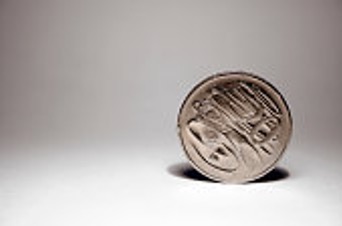Level: Year 2 and Year 3
Author: Anna Bock
Description:
The focus of this activity is for students to conduct an experiment that involves chance.They will use the information they gather to represent their findings in some way.
This activity can be repeated many times as the results of the experiment will likely be different than the previous experiment/s.
COIN TOSS
Materials:
A 20 cent coin, pencils and paper
Instructions:
- Look at the coin you have.
- What do you notice about it? (There is a head and a tail)
- If you toss the coin, will it land on a head or a tail?
- How do you know?
- What are the chances of you tossing a head?
- What are the chances of you tossing a tail?
- How can we describe the chance of tossing a head or tossing a tail?
- Toss the coin 20 times and record the results of your toss in a way that makes sense to you.
- Represent the results of your coin toss so that others would be able to make sense of the results easily.
- Represent your results in a different way
We want students to:
- Describe the chance of landing on a head or a tail in the coin toss
- Using words like equal chance, even chance, 50/50 chance to describe the likelihood of tossing a head or a tail
- Record what they toss
- Represent the results of their 20 coin toss in a variety of ways
Notes for parents:
This activity will help students in their understandings of chance. Even though we may say that tossing a coin has a 50/50 chance of landing on a head, children will see that does not always happen. We then have an opportunity to ask ‘Why?’.
This activity covers the following Australian Curriculum-Mathematics Content:
Year 2:
- Identify practical activities and everyday events that involve chance. Describe outcomes as ‘likely’ or ‘unlikely’ and identify some events as ‘certain’ or ‘impossible’ (ACMSP047)
- Collect, check and classify data (ACMSP049)
- Create displays of data using lists, table and picture graphs and interpret them (ACMSP050)
Year 3:
- Conduct chance experiments, identify and describe possible outcomes and recognise variation in results (ACMSP067)
- Collect data, organise into categories and create displays using lists, tables, picture graphs and simple column graphs, with and without the use of digital technologies (ACMSP069)
- Interpret and compare data displays (ACMSP070)
For any questions or queries please contact: choosemaths@amsi.org.au



